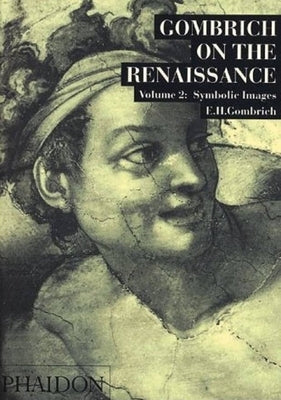Phaidon Press
Gombrich on the Renaissance Volume LL: Symbolic Images
Gombrich on the Renaissance Volume LL: Symbolic Images
Couldn't load pickup availability
In this second volume of his classic essays on the Renaissance, E H Gombrich focuses on a theme of central importance: visual symbolism. He opens with a searching introduction ('The Aims and Limits of Iconology'), and follows with detailed studies of Botticelli, Mantegna, Raphael, Poussin and others. The volume concludes with an extended study of the philosophies of symbolism, demonstrating that the ideas which preoccupied the philosophers of the Renaissance are still very much alive today.
Like its predecessor, Norm and Form, this volume is indispensable for all students of Renaissance art and thought as a work that has itself helped to shape the evolving discipline of art history. Reflecting the author's abiding concern with standards, values and problems of method, it also has a wider interest as an introduction to the fundamental questions involved in the interpretation of images.
Author: Leonie Gombrich
Publisher: Phaidon Press
Published: 01/01/1994
Pages: 340
Binding Type: Paperback
Weight: 1.94lbs
Size: 9.74h x 6.70w x 0.98d
ISBN: 9780714823812
Review Citation(s):
Library Journal 06/01/1994
About the Author
Sir Ernst Gombrich was one of the greatest and least conventional art historians of his age, achieving fame and distinction in three separate spheres: as a scholar, as a popularizer of art, and as a pioneer of the application of the psychology of perception to the study of art. His best-known book, The Story of Art - first published fifty years ago and now in its sixteenth edition - is one of the most influential books ever written about art. His books further include The Sense of Order (1979) and The Preference for the Primitive (2002), as well as a total of 11 volumes of collected essays and reviews.
Gombrich was born in Vienna in 1909 and died in London in November 2001. He came to London in 1936 to work at the Warburg Institute, where he eventually became Director from 1959 until his retirement in 1976. He won numerous international honours, including a knighthood, the Order of Merit and the Goethe, Hegel and Erasmus prizes.
Gifted with a powerful mind and prodigious memory, he was also an outstanding communicator, with a clear and forceful prose style. His works are models of good art-historical writing, and reflect his humanism and his deep and abiding concern with the standards and values of our cultural heritage.
This title is not returnable
Share


